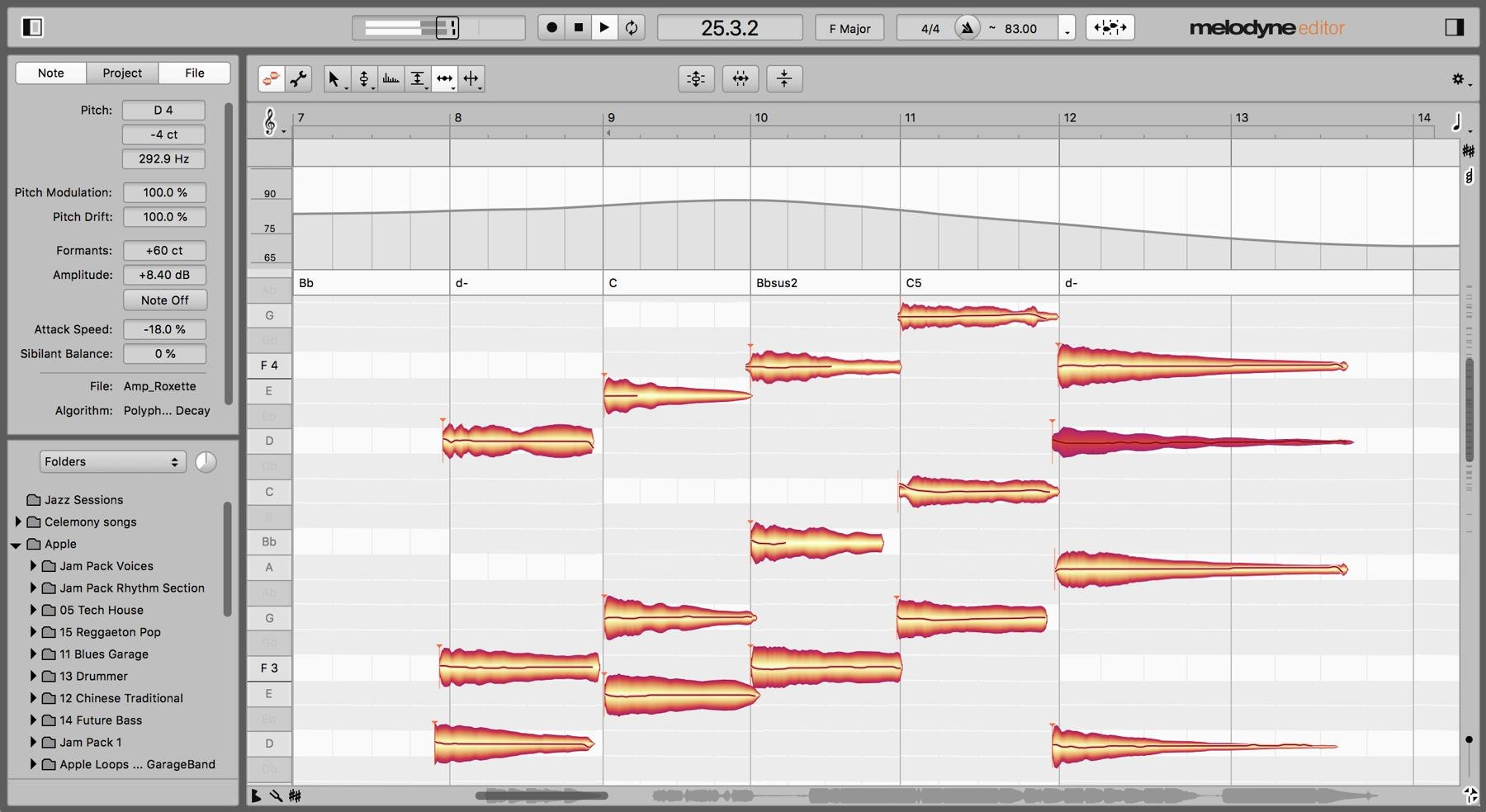

- #MELODYNE 3 HORIZXONTAL ZOOM HOW TO#
- #MELODYNE 3 HORIZXONTAL ZOOM PRO#
- #MELODYNE 3 HORIZXONTAL ZOOM SOFTWARE#
Note: You may need to show the track Inserts view if not already visible. Click on the tracks first insert point and select: plug-in > Other > Melodyne editor. (In my example I will be using the track labeled 'Lead Vocal').
#MELODYNE 3 HORIZXONTAL ZOOM PRO#
In Pro Tools, locate the audio track that you wish to apply the Melodyne process to.

Throughout this tutorial we will be using the Melodyne Editor version (there is also a Studio version that works as a stand-alone application).ġ. When you 'Transfer' the audio into Melodyne, it will analyze the passage and display it in its own editor window. It doesn't simply live on a track as a normal insert such as eq or reverb. Melodyne works slightly different than other plug-ins you've used in that you must 'Transfer' the audio into Melodyne. A vocal sound is ideally as humans can only sing one note at a time. Practically, this means a sound in which two or more notes NEVER overlap. In order to achieve the best results with Melodyne, the audio you wish to process should ideally consist of a single (monophonic) phrase with a recognizable pitch. It can be run as a stand-alone application or as a plug-in within Pro Tools (or any DAW). Melodyne can also be used to create melodies from a single vocal track in order to generate convincing backing vocal harmonies, time-stretch audio, and extract MIDI note data from audio recordings. It's impressive 'DNA' (Direct Note Access) technology enables independent manipulation of individual notes within complex polyphonic material or chords. It has become a market leader by offering amazing versatility, simple and intuitive interface, and tools no other developer can match.

Since it's introduction it has become one of the most widely used tools in modern music production. The Grammy Award winning Melodyne application was developed by Peter Neubäcker and released in 2000. Fast-forward to the present day, AutoTune, as well as Melodyne, are now used to such an extent that they have become the norm rather than the exception in the process of music production MELODYNE OVERVIEW The criticism of some regarding this effect was quickly subdued as the song became a global hit. This was the first successful hit song that highlighted the obvious use of the 'AutoTune' effect. It might have stayed that way had it not been for British music producer Mark Taylor's work with Cher on her hit song 'Believe' (released in 1998). It was originally intended to be very discreet and 'unseen' on the vocal or instrument performance.
#MELODYNE 3 HORIZXONTAL ZOOM SOFTWARE#
The introduction of 'AutoTune' software by Antares Audio Technologies in 1997 enabled further discreet pitch correction of vocal performances. The Vocoder is currently seeing a resurgence in popularity due to its recent use by such artists as Coldplay and Daft Punk. This process of pitch manipulation transforms the human voice in a synthesized robotic tone. Originally designed as a method of encoding speech for telecommunication transmission, Vocoders became widely used in music and film production throughout the 1970's. The lineage of these techniques can be traced back to the 'Vocoders' (Voice enCODERS) developed by Bell Laboratories in the 1920's. Without question, the most common application of pitch correction is in the manipulation of vocal performances. The ability to correct pitch has become a necessary tool in the arsenal of any contemporary audio engineer.
#MELODYNE 3 HORIZXONTAL ZOOM HOW TO#
This in-depth tutorial describes how to use Melodyne pitch correction including auto and manual correct methods, using the Melodyne Editor and understanding it's integration within a Pro Tools session.


 0 kommentar(er)
0 kommentar(er)
